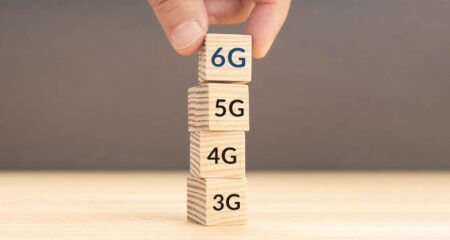 Telecommunications equipment vendor Ericsson predicts that the worldwide number of 5G subscriptions will soar to 2.6 billion within six years.
Telecommunications equipment vendor Ericsson predicts that the worldwide number of 5G subscriptions will soar to 2.6 billion within six years.
The figure is contained in the company’s latest Mobility Report, for November 2019, which makes a range of forecasts for the telecoms industry up to 2025.
By then, as much as 75% of the world’s population will be covered by 5G networks, with average smartphone consumption set to amount to 24GB/month, from 7.2GB now, driven by demand for video and as new services such as virtual reality and augmented reality become broadly available.
Over the same period, the total number of cellular Internet of things connections is expected to jump from 1.3 billion in 2019 to five billion.
Ericsson said 2019 is the year telecoms operators in Asia, Australia, Europe, the Middle East and North America began switching on 5G infrastructure, with South Korea taking an early lead with more than three million 5G subscriptions by the end of September.
China’s launch of 5G in late October has also led to an update of the estimated 5G subscriptions for the end of 2019, from 10 million to 13 million.
‘Volume market’
“In 2020, 5G-compatible devices will enter the volume market, which will scale up 5G adoption,” said Ericsson executive vice president and head of networks Fredrik Jejdling. “The question is no longer if, but how quickly we can convert use cases into relevant applications for consumers and enterprises. With 4G remaining a strong connectivity enabler in many parts of the world, modernising networks is also key to this technological change we’re going through.”
Ericsson said 5G uptake is expected to be significantly quicker than it was for the previous generation technology, 4G/LTE. The most rapid uptake is expected in North America with 74% of mobile subscriptions in the region forecast to be 5G by the end of 2025. Northeast Asia is expected to follow at 56%, with Europe at 55%.
Year-on-year mobile traffic growth for the third quarter of 2019 was high at 68%, driven by the growing number of smartphone subscriptions in India, the increased monthly data traffic per smartphone in China, better device capabilities, an increase in data-intensive content and more affordable data plans.

“On a global level, 5G network deployments are expected to ramp up during 2020, building the foundation for massive adoption of 5G subscriptions,” Ericsson said. “Over the next six years, 5G subscription uptake is expected to be significantly faster than that of LTE, following its launch back in 2009. Key factors are the earlier engagement of China in 5G compared to LTE, for which the country was not one of the early markets to launch, as well as the earlier availability of devices.”
However, 4G/LTE will remain the dominant access technology through to 2025. It’s expected to peak in 2022 at 5.4 billion subscriptions, declining to about 4.8 billion by the end of 2025 and users migrate to 5G.
“We anticipate a slower decline for 2G (GSM/Edge-only) subscriptions than previously estimated, particularly in the Middle East and Africa region. In part, this is due to the longer lifecycles of 2G feature phones and the relatively higher cost of smartphones.”
Global total mobile data traffic is expected to reach around 38 exabytes per month by the end of 2019 and is projected to grow by a factor of four to reach 160 exabytes per month in 2025. Smartphones continue to be at the epicentre of this development as they generate most of the mobile data traffic — more than 90% today and 95% projected in 2025, Ericsson said.
“Populous markets that are early with 5G are likely to lead traffic growth over the forecast period. By 2025, we expect that 45% of total mobile data traffic will be carried by 5G networks.” — © 2019 NewsCentral Media




